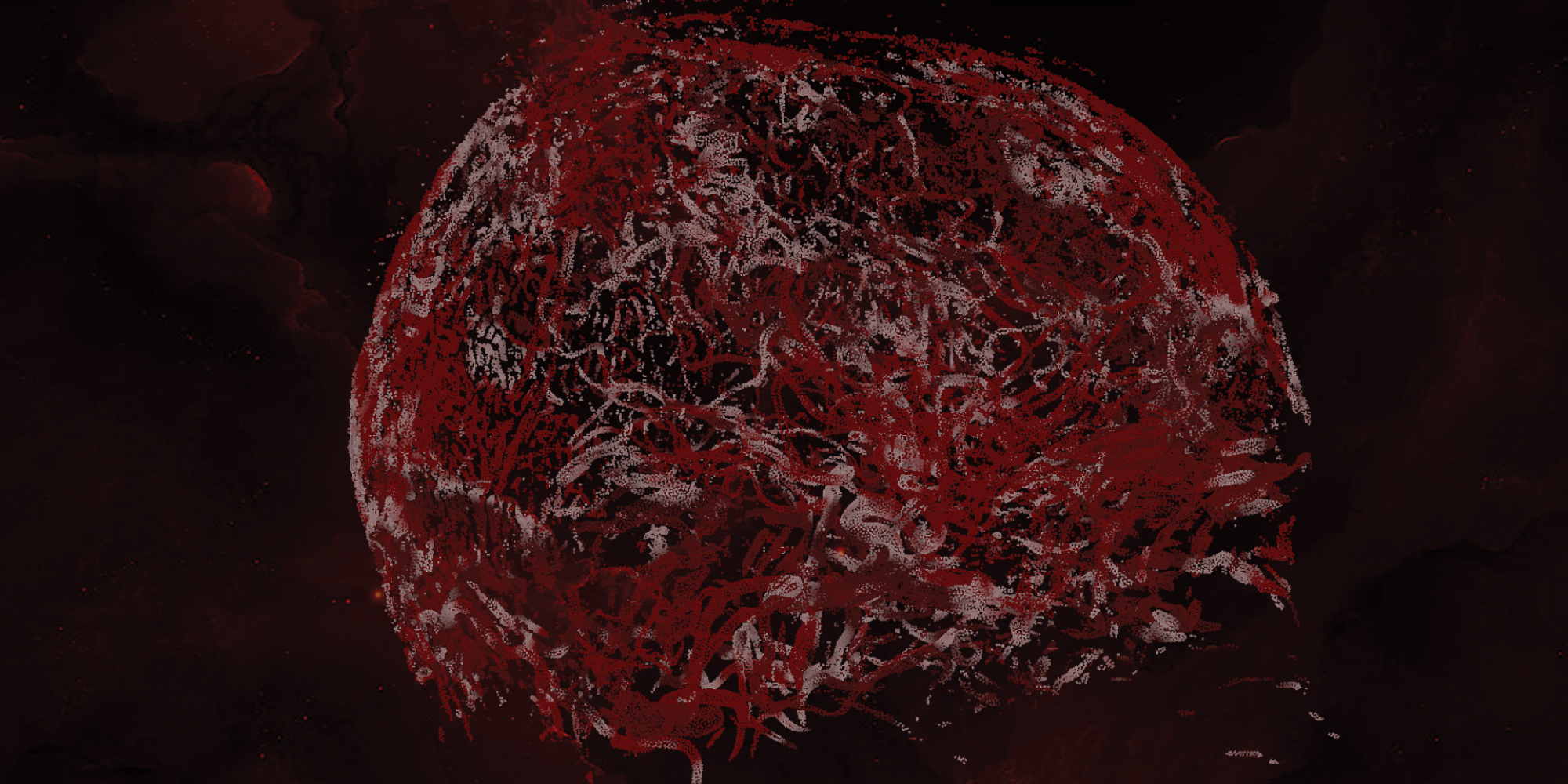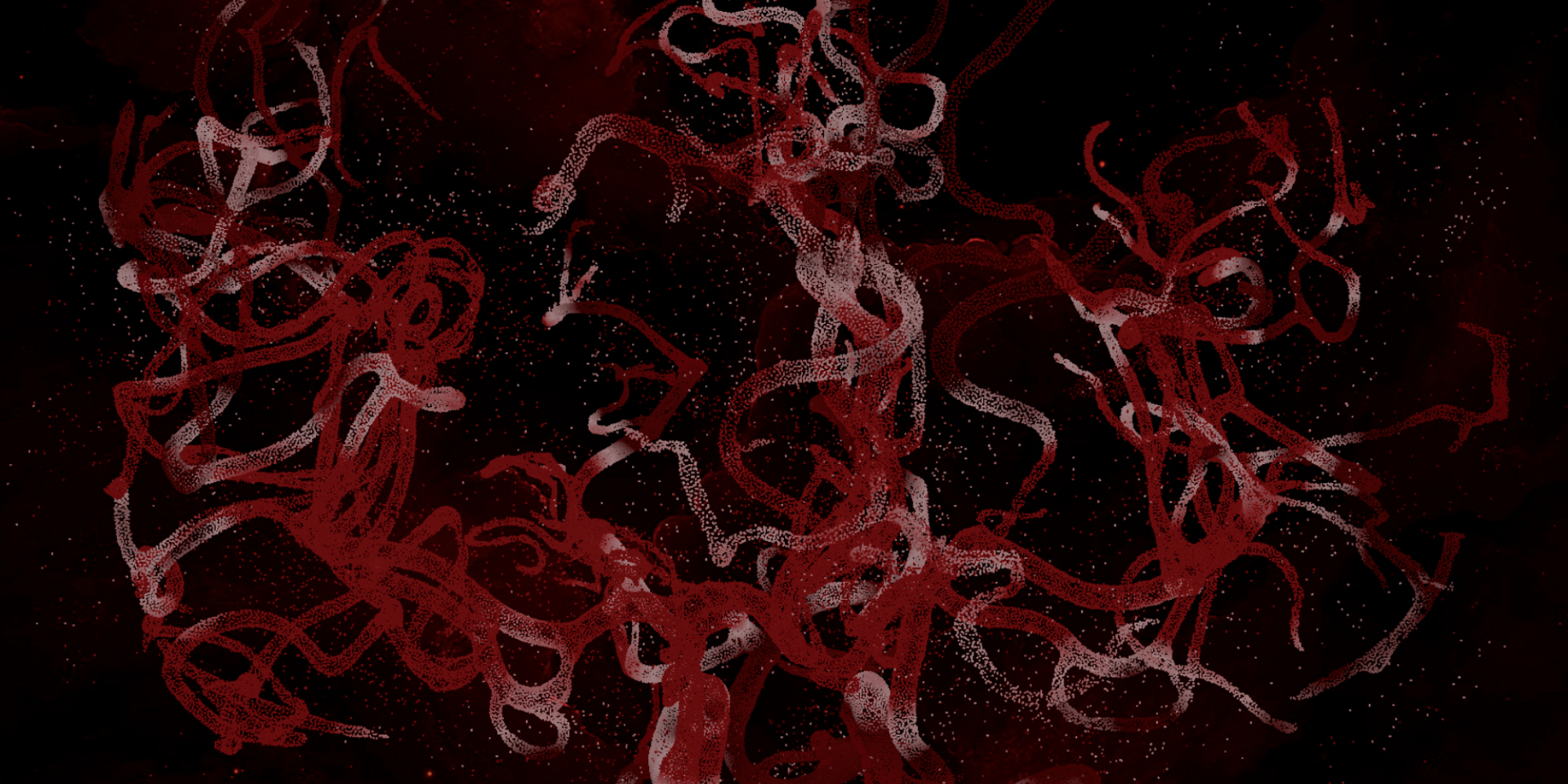by Fraunhofer MEVIS
At the beginning, the MR image of a blood vessel tree in the human brain appears on the monitor. Sound and music start to play and the image dissolves, forming shapes and patterns that immediately dissolve again and come together to form new structures. The work can leave you spellbound and immersed in an associative maelstrom of organic-looking pixel clouds flowing back and forth. “Moments Within: Visualizing the Journey of Memory” is the title of the multimedia work by Turkish artist Zeynep Abes. It was created during the “STEAM Imaging IV” residency program hosted this year by the Fraunhofer Institute for Digital Medicine MEVIS in Bremen in collaboration with Ars Electronica, the International Fraunhofer Talent School Bremen, the School Center Walle, and the UCLA ArtSci Center. In September, the artwork will be presented online at this year’s Ars Electronica Festival. At the end of 2022, it will be on display as an installation at the UCLA ArtSci Center.

STEAM stands for the joining of science, technology, and mathematics with other disciplines, such as art. The residency program allows artists to engage in intensive exchange with Fraunhofer MEVIS experts to examine current methods, developments, and results of research in their works critically. A key component of the program is the shared encounter with pupils and their parents from the School Center Walle. Doing so, Fraunhofer MEVIS takes an original approach: the art and research alliance enables prospective university students and their parents to approach scientific and technical topics from a new and unexpected perspective and encourages them to engage with science, technology, and art in a self-determined, creative way.
Zeynep Abes lives and works in the United States. Many of her multimedia works revolve around the psychological and medical concept of memory. “I’m fascinated by how memories change over time and the role old photos, videos, and sound recordings play in reconstructing the past in our minds,” Abes says. “And I wonder what role art-makers can play in preserving memories.” Her themes revolve around identity, history, and memory loss. One of her earlier works vividly illustrates this. “Memory Place” shows a virtual, dreamlike tracking shot through a street in Istanbul, digitally reconstructed from old photos and personal memories. She also has experience hosting educational workshops on social justice issues and mindful media making.
Fluid patterns
As a basis for her current work, created during the artist residency, Abes used a high-resolution MRI scan showing the vessels of a human brain. She picked regions that are particularly important for our memory: hippocampus, amygdala, prefrontal cortex, and neocortex. When the animation is started, the image flows apart in quiet yet dynamic movements, following mysterious flow lines to coalesce into new structures.
“The point cloud animation is intentionally programmed to react a little differently each time you play it; the same thing never happens twice,” Abes explains. “Much like our memory, every time we remember something, what we remember seems a little different.” What’s more, “Everyone who views the animation sees something different in the changing patterns,” she says. The happening is deepened by an atmospheric collage of music and voices. “Among other things, my singing grandfather can be heard; he was diagnosed with dementia a few months ago,” Zeynep Abes says.

In creating “Moments Within,” Abes worked closely with Fraunhofer MEVIS experts over a period of eight weeks through intensive video sessions. “I come from a social science background, and it was very interesting for me to look at the topic of memory from a natural science perspective,” Abes explains. “It was fascinating to learn about how the brain encodes, sorts, stores, and retrieves memories, and how much medical imaging can play a role here.”
Certain aspects interested the artist in particular: how do false memories arise and how do we form them in our minds? Why do siblings sometimes remember the same event in completely distinctive ways? What roles do emotions play when storing memories? Can brain scans be used to visualize memory, i.e., to make it properly visible? “To my surprise, the experts told me that this was not possible in such a direct way; there are no special places in the brain where our memories are located,” she says. This was not necessarily a disadvantage for her creative work: “So I could take a lot of artistic liberties and create the work in an emotional and poetic sense.”
Successful Communication
A vital part of the residency program are the joint activities with students from the health focus at the School Center Walle. In the workshop series entitled “From the hand to the magnetic resonance tomograph to the smartphone: Manually and digitally generated representations of the body” they gained hands-on experience in medical image processing, anatomical-medical drawing, and AR technologies. They also met Abes, who began her collaboration with MEVIS during the same period. Alongside the scientists, they developed topics for evening events on current health topics: How does memory change in Alzheimer’s disease? What is still science fiction and what is already reality in medicine? How does medical research find its way into the clinical routine?
What has made these evenings even more special has been inviting the pupils’ parents. “By doing so, we want to provide access to new technologies in digital medicine and STEM subjects required for this,” says Bianka Hofmann, who leads and develops the residency program alongside her colleague Sabrina Tölken. “Bringing education closer to the demands of the real world and the need to attract young STEM academics with diverse life backgrounds are important challenges that we are addressing with the project.” After all, “Parents are still one of a child’s main influences when it comes to choosing a field of study,” emphasizes Tölken.
Prepared core questions form the heart of the evening event. They serve as a framework for dialogue between Zeynep Abes and the MEVIS researchers, which is open to all participants. This extremely open form of discussion made it easier for the students and their parents to become involved.
With these activities, STEAM Imaging acts as an incubator for the establishment of a permanent school sponsorship with School Center Walle. The goal is to grow the research institute’s pre-university talent development program together with teachers and students, thereby providing in-depth experiences about careers in digital medicine. In addition to internships, expert discussions on job profiles, possible fields of study and career opportunities, realistic insights into the actual work of scientists will be provided.

Zeynep Abes is an artist and curator from Istanbul, Turkey, living in Los Angeles, USA. She studied film and interactive media at Emerson College, Boston, later getting her start at LACMA’s Art+Tech lab, Los Angeles creating AR installations. She then worked at the Sundance Film Festival’s New Frontier Exhibitions and graduated from UCLA’s Design Media Arts MFA program, Los Angeles. Zeynep Abes is currently a Ph.D. candidate at USC’s Media Arts and Practice program, Los Angeles. She primarily works with archived media, photogrammetry, and immersive media. Her subjects revolve around identity, history, and memory. She is in pursuit of exploring the role artists play in preserving memories to navigate the alienation that arises from changing social environments.
